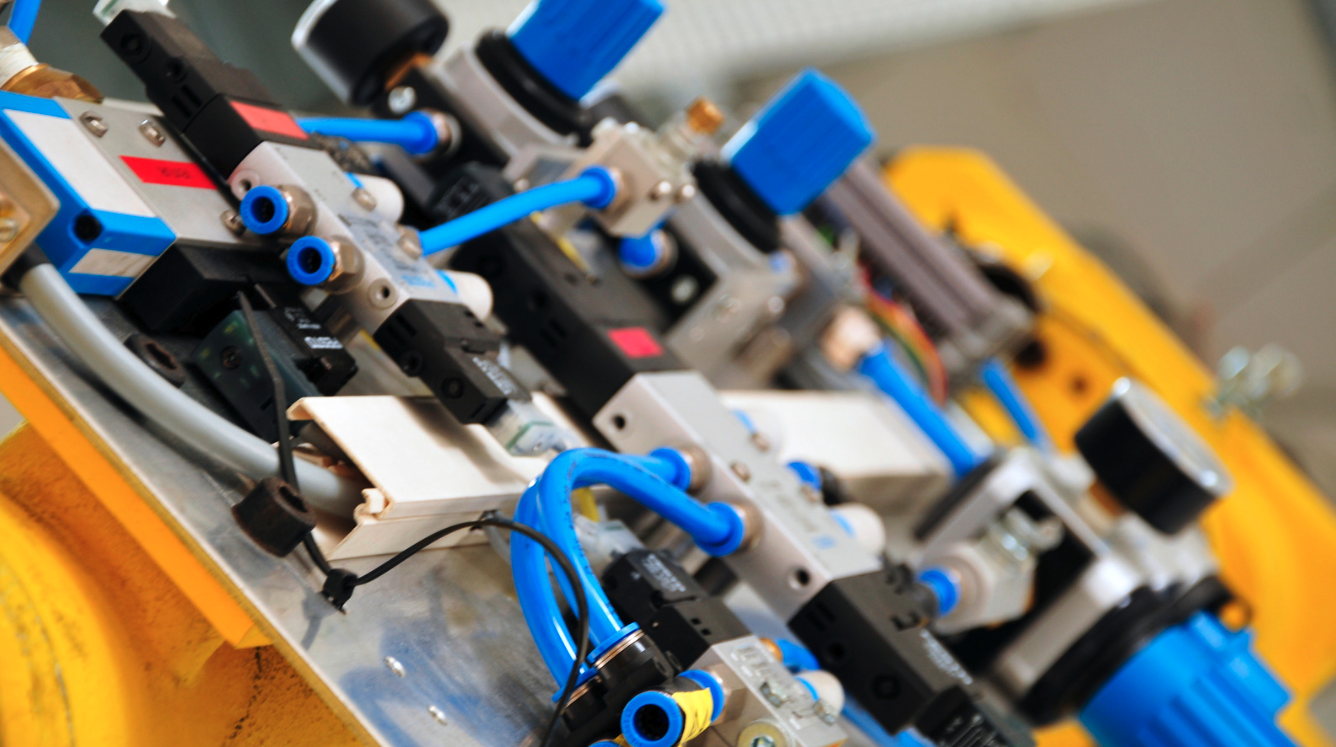Pneumatic Components: Types, Applications and Functions
by Quotebeam Team
Apr 3, 2024

Pneumatic systems are integral to numerous industries, providing efficient power transmission and control in a wide range of applications. From manufacturing and automation to transportation and construction, pneumatic components play an important role in driving productivity and innovation. In this guide, we'll go into the world of pneumatic components, exploring their types, applications, and functions.
What is a Pneumatic System?
Pneumatic systems utilize compressed air to transmit power and control mechanical motion. They consist of various pneumatic components, including compressors, actuators, valves, and fittings, which work together to perform specific tasks. Pneumatic systems offer advantages such as simplicity, reliability, and cost-effectiveness, making them ideal for a diverse array of industrial applications.
What are the Pneumatic Components?
Pneumatic components are devices that use compressed air to generate, control, or transmit mechanical motion. They can be broadly categorized into actuators, valves, air preparation units, and accessories. Each type of component serves a specific function within a pneumatic system, contributing to its overall efficiency and performance.
Pneumatic System Components - What are the Basic Components of a Pneumatic System?
The basic components of a pneumatic system include:
- Compressor: A compressor is used to generate compressed air by increasing the pressure of atmospheric air. It provides the necessary power source for pneumatic systems, supplying compressed air to other components.
- Actuators: Actuators are devices that convert compressed air energy into mechanical motion. They include cylinders, rotary actuators, and grippers, which are used to perform various tasks such as lifting, pushing, pulling, and rotating.
- Valves: Valves control the flow of compressed air within a pneumatic system, regulating the direction, rate, and timing of air movement. They include directional control valves, pressure control valves, flow control valves, and check valves.
- Air Preparation Units: Air preparation units, also known as FRL (Filter, Regulator, Lubricator) units, are used to clean, regulate, and lubricate compressed air before it enters the pneumatic system. They help maintain the quality and efficiency of air-powered components.
- Accessories: Pneumatic accessories include fittings, tubing, hoses, connectors, and manifolds, which are used to connect and interface pneumatic components. They provide flexibility and versatility in pneumatic system design and installation.
Pneumatic System Components and Their Functions
Each pneumatic component serves a specific function within a pneumatic system:
- Compressors are pivotal in pneumatic systems, generating compressed air efficiently from ambient air sources. This compressed air serves as the power source for pneumatic components, enabling them to execute various tasks with precision and reliability.
- Actuators serve as the backbone of pneumatic systems, converting the stored energy in compressed air into mechanical motion. Whether it's linear motion provided by cylinders or rotary motion from rotary actuators, these devices propel the movement of components in industrial automation, machinery, and other applications.
- Valves act as the gatekeepers of compressed air flow within pneumatic systems, regulating the direction, rate, and timing of air movement. They ensure precise control over pneumatic actuators and other devices by opening, closing, or modulating airflow, enabling seamless operation and performance optimization in pneumatic systems.
- Air Preparation Units are essential for maintaining the integrity and efficiency of compressed air in pneumatic systems. These units clean the air of contaminants, regulate its pressure, and lubricate moving parts to minimize wear and ensure smooth operation. By providing clean, regulated, and lubricated air, air preparation units prolong the lifespan of pneumatic components and enhance system reliability.
- Accessories act as the connectors and interfaces between various pneumatic components, facilitating seamless integration and configuration of pneumatic systems. Whether it's fittings, tubing, hoses, connectors, or manifolds, these accessories enable engineers to customize pneumatic systems according to specific application requirements, ensuring versatility and adaptability in diverse industries.
By understanding the types, applications, and functions of pneumatic components, engineers and operators can design and implement efficient pneumatic systems tailored to their specific needs and requirements.
